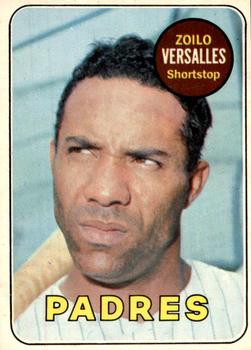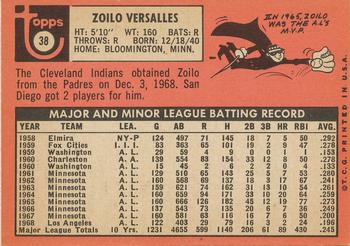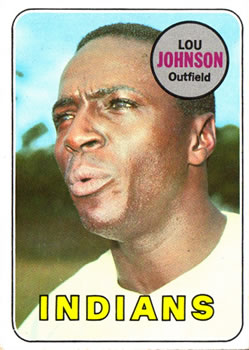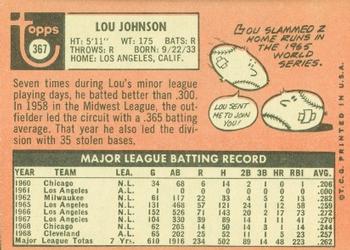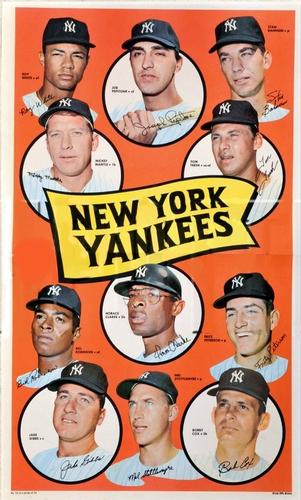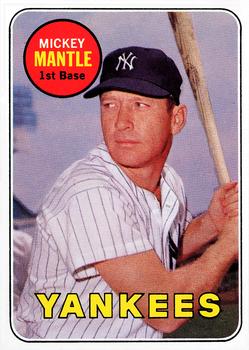Introduction
In mid-May 2024, Sports Collectors Daily published Roy Carlson's deep dives into 1969 Team Posters, one of my favorite vintage sets for sheer size and displayability. I profiled its #5, the Baltimore Orioles, back in 2012.
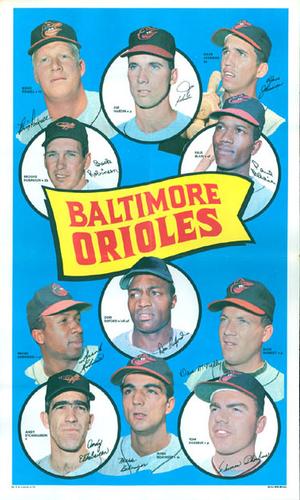 |
| 12"x20" at full, unfolded size |
Each of Roy's articles shares original design mockups and quantifies how Topps coped with an absence of fresh photos for that year's cards.
Close inspection of Roy's work highlights how Topps made the best of an expansion era defined by rapid player movement. 1969 posters impress both in size and breadth of lineup, even for new squads in Montreal, KC, Seattle, and San Diego.
1969 Topps issues: Which came first? The chicken, egg, or team posters?
Topps added every animal to their barnyard in 1969, if you include standard and test issues.
I bet fan interest during an expansion year inspired this burst of marketing enthusiasm, in spite of the players union refusing to pose for new photos in 1968, pending better compensation from Topps. Their boycott led, in part, to infamous goofs like batboy Leo Garcia (left) standing in for Aurelio Rodriguez (right).
Check out #653's profile from Collecting 1969 Topps to learn everything worth knowing about this card.


Keith Olbermann shared similar insights into 1969 images for SCD in 2010. If Topps bought their rookie Reggie Jackson and "Aurelio Rodriguez" photos from legendary photographer George Brace, #653's mistaken identity could stem from his own goof.
San Diego's expansion year poster shows further impact from players refusing to pose for Topps cameras: 10 hatless headshots and one airbrushed bill for Ron Davis. The Padres even traded Ron to Pittsburgh on March 28, so a proper hat logo would've been out of date by opening day.
The circled Padre, Bill Davis, achieved a measure of hobby fame by appearing on five straight multiplayer "rookie stars" cards, 1965-69, an unbreakable record given how Topps handles RCs today. Bill remained on the verge of breaking out for years, thanks to minor league power and fan popularity. Read Hope Springs Eternal for a look at every Davis base card. (Don't confuse 1966 cardmate Tom Kelley with Minnesota's manager of similar name.)
That Padres poster marked Davis's final Topps appearance, once again sharing the spotlight with (many) others. San Diego waited six weeks before sending former AL MVP Zoilo Versalles to Cleveland as their PTBNL, creating some interesting 1969 checklist anachronisms.
Note Zoilo's 1969 stamp says "San Diego shortstop" and his autograph graces their album, if upside-down. That tells us Topps designed and produced this set before they could react to late 1968 trades.
His first series card (#38) splits the difference, with Padres on the front and trade to Cleveland on the back! This shows Topps locked series one card fronts by December 1968, when San Diego sent him to Cleveland, and back text sometime later. (It should also say "N.L." under league, since Zoilo played for the Dodgers.)
Zoilo's hatless image from his "S.D. Padres" stamp appears on Cleveland's poster, so these came together sometime after that December swap. In echoes of Ron Davis, Cleveland shipped 😮 Lou Johnson to California on 4-April, so his poster and card team became out-of-date by opening day.
Card #367 fails to mention Johnson's trade, so Topps locked their poster layouts
and third series of cards sometime between December & April. Zoilo and Lou each appear in multiple 1969 sets as players on teams they never quite played for.
Why did Topps invest in such gaudy team posters?
I think 1969's lack of fresh photos exacerbated a general laziness Topps showed toward their 1960s team cards. This 1961 White Sox card offers one mediocre option. So many shadows! Such red background!
Did someone realize there had to be a better way? Perhaps Topps hoped a larger, headshot format could satisfy fans, at least in regional markets, even as they dropped team cards from 1969's otherwise huge base set of 664 cards.
Also consider how 1969 marked the end of Mantle's career, a mainstay for Topps since 1952. He appears on the Yankees poster, its stamps and albums, rub-on decals, Super baseball, 4-in-1 stickers, and base card #500, all of them released after his April retirement announcement.
I wrote before about how Stan Musial & Ted Williams
inspired Topps to launch All-Star cards in 1958. Good odds that they knew Mantle cards sold lots of gum, so wanted this 1969 farewell tour. If you gotta go, these shots serve as terrific salutes!
In summary
I think 1969 team posters served at least three purposes for Topps.
- Test alternative looks for team photos in lieu of cards in their base set
- Help fans in expansion cities get familiar with new rosters
- Give more Mick to Yankee fans during an otherwise moribund era for their franchise
Peccadilloes of offseason transactions like Bill-for-Zoilo show how Topps did their best to match current lineups to a production schedule that took several months to prepare 1969 releases. All these extra sets helped dust off dozens (hundreds?) of hatless photos from company archives, distinguishing that year from any other in hobby history. Thanks again to Roy's work for inspiring further research. If any other details stand out to you, let me know in the comments.



































